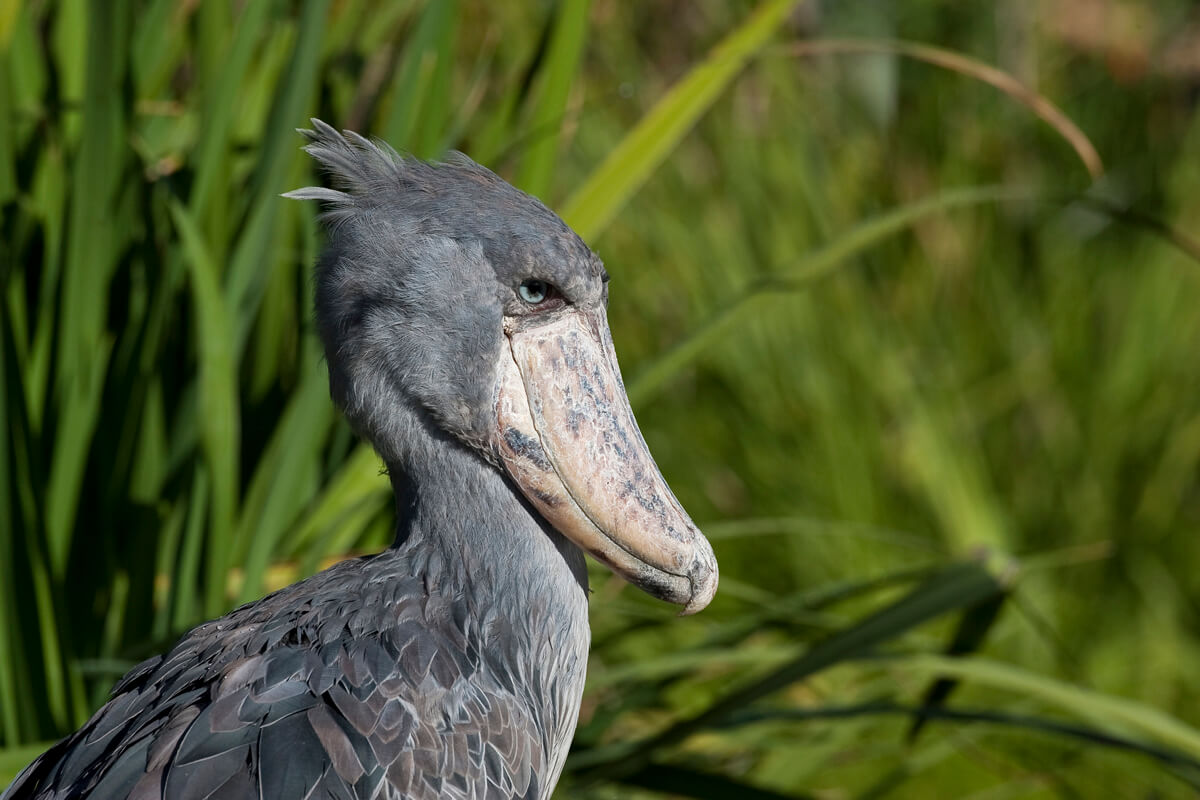
The shoebill stork is considered as one of the most interesting and desired birds in Africa.Ĭontact as for arrangements of these birding safaris to have a chance to spot the shoebill stork. The adult birds always utter a hoarse croak as a sign of aggression near a marabou stork. The infants always beg for food, calling out with uncannily like human hiccups. The species sometimes utters a cow-like moo with pitched whines. There are reports that they can sell for US 10,000-20,000, making them the most expensive birds in the zoo trade. Shoebill stork is attracted to poorly oxygenated water which is a surface to breathe. The shoebill stork is very slow and it is very sensitive to human disturbance and it abandons their nests when only flushed by a human. There are over 1000 shoebill storks and the shoebill stork is mostly hunted by fishermen. Shoebill stork can as well be spotted in different National parks including in Queen Elizabeth National park along the Lake Edward flats, Murchison falls National park this is the area where the Nile Margeees wit Lake Albert, Lake Mburo National park, Lake Kyoga, Ziwa Rhino Sanctuary, Mabamba swamp, Semiliki National park, Nabujuzi swamp among other wetlands. When the shoebill stork is on the ground it’s sluggish, very graceful in the air when attacked, they bull back their wings as they approach their prey as a way of strength. The shoebill is very silent and it displays their nests. Shoebill storks are very protective and mostly very solitary. Shoebill storks feed on lungfish, puddle fish, frogs, snakes, baby crocodiles and many more, they can all fit in his wide bill. Shoebill stork is found in the swamp areas, lakes and they end up finding their food in the water. Although a few Shoebills have lived quite long lives, most have not and successful breeding is only known to have occurred on two occasions. The elder shoebills will then feed the chicks for several months. The Shoebill Balaeniceps rex is an uncommon species in zoological collections worldwide. The shoebill will then incubate the birds for a period of a month. Shoebill stork bird builds a nest on the grounds and the females lay only two eggs. Shoebill stork forms a Monogamous relation during the mating season and this happens in the months of June and April. The Shoebill stork is a solitary bird with a life span of 50 years. The name means father of the shoe, and it’s a unique bird because of its bill. Arabs call the shoebill stork – Abu Maruk. Shoebill stork is 150cm tall and it weighs up to 15 pounds.

There are a few facts about the bird species in the park which worth seeing during your Uganda safari Tour. This is a bird that sought by almost all travelers that visit Uganda and Africa at large. The bird is mostly seen in Uganda however in Kenya as well it can be spotted, in North Cameroon, Central African Republican, Malawi, Botswana, and Upper Congo. Shoebill is a rare bird that is sighted in Uganda National Parks and the bird is also commonly known as a whale head yet it’s a large bird that is found in the lakes of the Eastern part of Africa. The birds can reach 5 feet in height and are classified as vulnerable, with only 3,300 to 3,500 mature shoebills still. The shoebills in Pairi Daiza are visible from mid-may until september.Shoebill Stork is a special bird found in Uganda “ the pearl of Africa” which protects a number of bird species including other wildlife species, primate species, tree-climbing lions, Antelopes and many. ZooTampa is home to three of only four shoebill storks in the United States. It is a bird that is seldom seen in captivity : Pairi Daiza was the first park in the world to have succeeded, in 2008, to hatch two chicks : Abou and Marqoub. Living in wetlands, it feeds not only on fish, but also on snakes, frogs and young varanes or crocodiles, which it swallows whole by dredging the mud with its extraordinary beak. The Shoebill Stork is so secretive that it was discovered by European scientists only in 1850, at the time of expeditions into the immense marshy areas of Africa, to the sources of the Nile.

It is its beak which is especially remarkable : in the shape of a 25cm-long and 10cm-wide shoe, hence its so evocative local name : “ abou marqoub ”, Father of the Shoe! With its round little eyes and its vaguely ironic air when it stares at you, completely motionless, this large wader bird, of a pearl-grey colour, is rather related to herons and pelicans than to storks, with which it shares the silhouette, however.


 0 kommentar(er)
0 kommentar(er)
